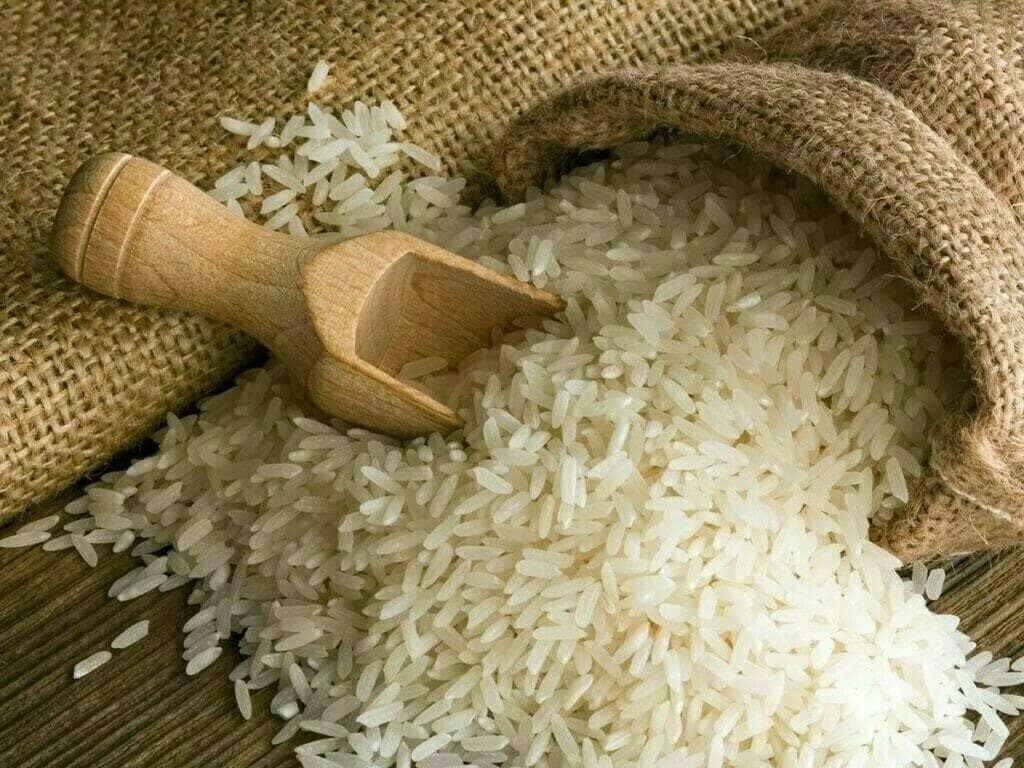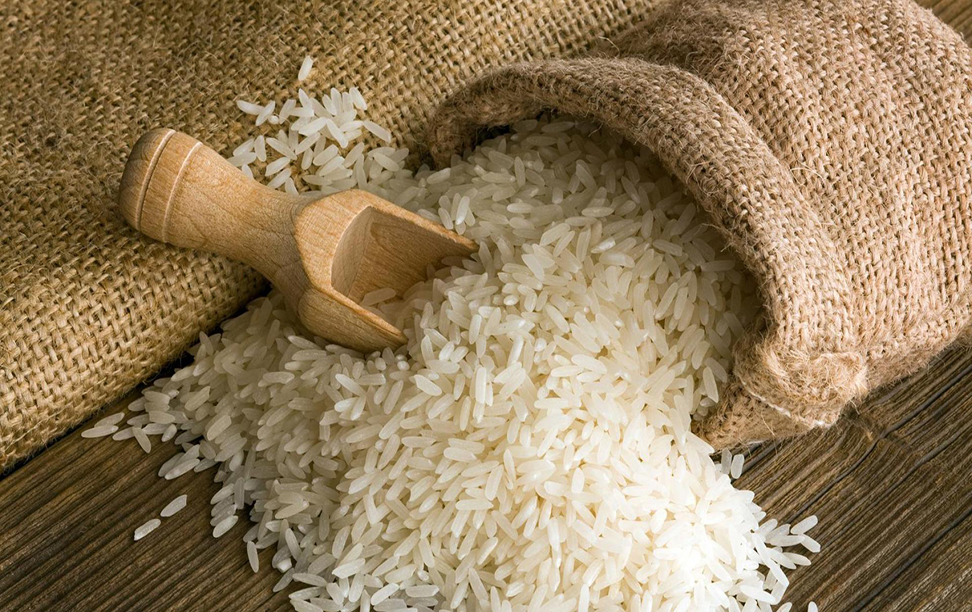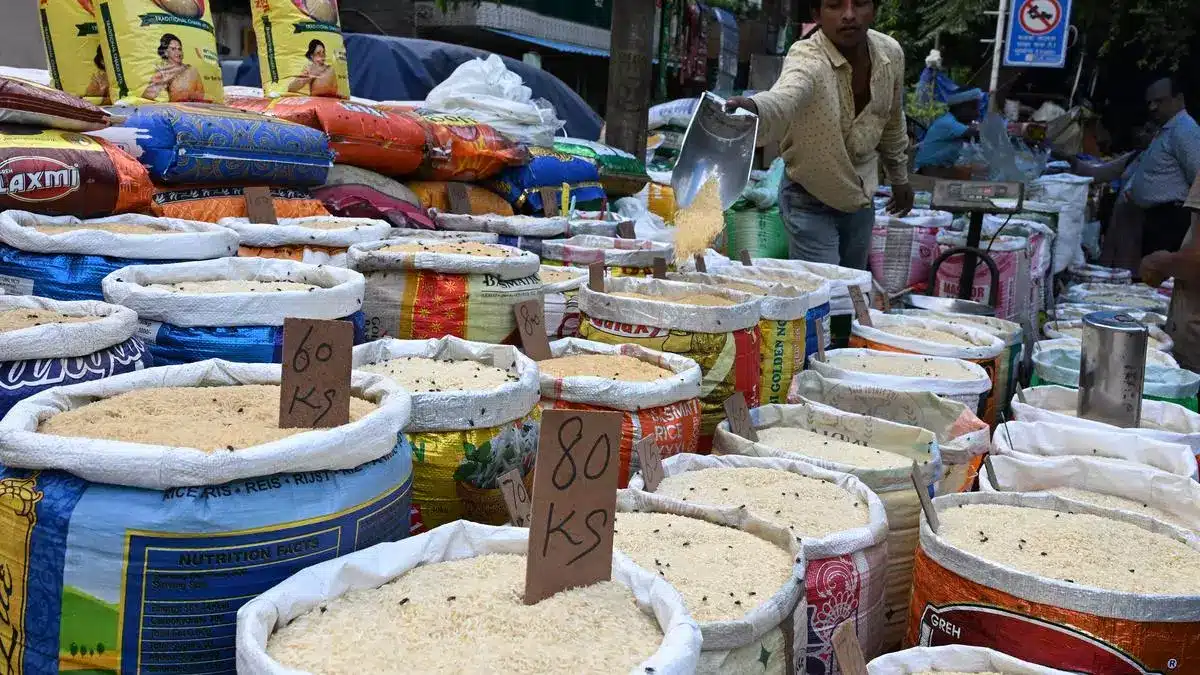Tags
Basmati rice export prices plummet below government MEP, global buyers stay away
Synopsis
Export price of basmati rice falls below government-fixed minimum export price, impacting global buyers and domestic prices. Concerns arise over MEP changes, basmati trade competitiveness, and price pressure. Monsoon and La Niña forecasts influence basmati production, while India’s rainfall patterns and consumption trends play significant roles.

The export price of basmati rice has fallen way below the government-fixed minimum export price of $950 per tonne to $800-$850 per tonne, and despite the low prices, there are few global buyers.
Domestic prices too have fallen from Rs 75 per kg to Rs 65 per kg on low export offtake. Exporters said importing countries had bought good quantities of basmati rice from India in a hurry following the uncertainty created by the government by once increasing the MEP to $1200 per tonne last August and then bringing it down to $950 per tonne in October, two large exporters said.
The Punjab Rice Exporters Association has written to the Agriculture and Processed Food Product Development Authority (APEDA) to look into the matter so that exporters do not suffer due to the imposition of MEP. APEDA is the nodal agency to issue registration of basmati export contracts.
“Overseas buyers have created a huge stock of basmati rice due to the uncertainty created by imposing MEP on basmati rice. The fear that the government might even stop exporting basmati rice prompted the buyers to stock up. Also, they bought heavily from Pakistan, a basmati producer, because of the uncertainty created by the government over MEP,” said Vijay Setia, past president of All India Rice Exporter Association and a leading basmati exporter.
Basmati rice is not widely consumed in India and is mainly exported. Generally, India produces around 6.5 million tonnes of basmati annually. Of this, around 5 million tonnes is exported and around 0.5 million tonnes is consumed domestically and the rest is carried over.
“But in Kharif 2024, we have produced 8 million tonnes of basmati rice, which is 23 per cent higher than Kharif 2023. Exports have been around 5.25 million tonnes. Around one to 1.25 million tonnes have been consumed domestically. The rest has been carried forward this year,” said Setia.
Gautam Miglani, managing partner of LRNK, a 50-year-old Haryana-based basmati rice exporting firm said “Basmati production in Kharif 2025 will be better as the monsoon will be normal. Farmers are buying a good number of seeds for sowing. If the government does not do anything with MEP, then the basmati trade will suffer and Pakistan, our main rival in the global market, will continue to have an edge over us. Prices of rice in the domestic market have already fallen by 10-15% and they may fall further.”
Incidentally, after a three-year hiatus, La Nina is expected to make a strong comeback to the Indian shores by August-September, according to the IMD forecast. La Niña is a weather event characterized by cooler-than-average sea surface temperatures in the central and eastern equatorial Pacific Ocean. It typically brings huge rainfall across India.
Miglani said that a good monsoon will result in a bumper basmati crop. “With a high carry-over stock and bumper basmati rice production, prices will be under pressure. The exporters and farmers will suffer if the government continues with a fixed MEP of $950 per tonne. Price recovery for the crop will take a hit.”
Nearly 75% of India’s annual rainfall comes during the monsoon season, which spans just four months.
Published Date: May 28, 2024







